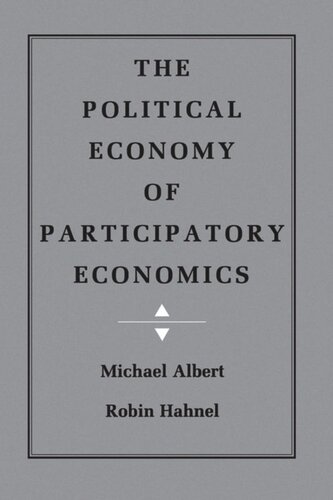

Most ebook files are in PDF format, so you can easily read them using various software such as Foxit Reader or directly on the Google Chrome browser.
Some ebook files are released by publishers in other formats such as .awz, .mobi, .epub, .fb2, etc. You may need to install specific software to read these formats on mobile/PC, such as Calibre.
Please read the tutorial at this link: https://ebookbell.com/faq
We offer FREE conversion to the popular formats you request; however, this may take some time. Therefore, right after payment, please email us, and we will try to provide the service as quickly as possible.
For some exceptional file formats or broken links (if any), please refrain from opening any disputes. Instead, email us first, and we will try to assist within a maximum of 6 hours.
EbookBell Team

4.4
32 reviewsWith the near bankruptcy of centrally planned economies now apparent and with capitalism seemingly incapable of generating egalitarian outcomes in the first world and economic development in the third world, alternative approaches to managing economic affairs are an urgent necessity. Until now, however, descriptions of alternatives have been unconvincing. Here Michael Albert and Robin Hahnel support the libertarian socialist tradition by presenting a rigorous, well-defined model of how producers and consumers could democratically plan their interconnected activities.
After explaining why hierarchical production, inegalitarian consumption, central planning, and market allocations are incompatible with "classlessness," the authors present an alternative model of democratic workers' and consumers' councils operating in a decentralized, social planning procedure. They show how egalitarian consumption and job complexes in which all engage in conceptual as well as executionary labor can be efficient. They demonstrate the ability of their planning procedure to yield equitable and efficient outcomes even in the context of externalities and public goods and its power to stimulate rather than subvert participatory impulses. Also included is a discussion of information management and how simulation experiments can substantiate the feasibility of their model.